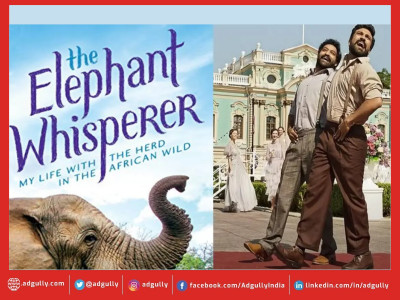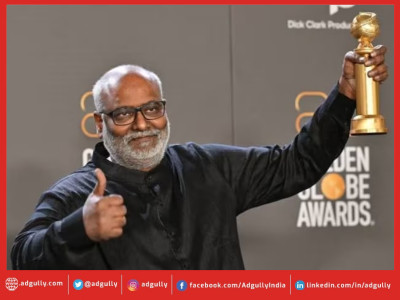Is the hybrid model of movie release delivering the ROI?
Movie halls are being shut down again or having to operate with 50% seating capacity and reduced timings due to the rapid spread of the Omicron variant across the country. This is a setback for the major releases lined up for launch in January-February 2022, including ‘Jersey’, ‘RRR’, ‘Radhe Shyam’, and ‘Prithviraj’, among others.
In the last two years of the pandemic, we have seen the movie industry opt for either releasing the new films on OTT platforms or having TV premieres, or going for a hybrid release model, when movie halls were allowed to reopen – that is, simultaneously releasing the new film in theatres and on OTT platforms.
Salman Khan’s ‘Radhe - Your Most Wanted Bhai’ is one example of a film opting for a hybrid release model in May 2021. ‘Radhe’ ran into the problem of piracy almost as soon as the movie was released on ZEE5, which prompted swift action against the perpetrators. Salman took to social media to warn people pirating the movie and urged his fans not to watch the pirated version of the movie.
Cinemas have always opposed the hybrid model. Let us take the example of the American superhero film ‘Black Widow’. Despite the high expectations and initial strong opening, the Marvel Comics-based movie underperformed. The National Association of Theatre Owners (NATO), representing more than 35,000 movie screens across the US and more than 32,000 additional screens in 101 countries, attributed the tepid response of the movie to the hybrid model of release (theatre plus Disney) in addition to the piracy. The trade body has asserted that an exclusive theatrical release “means more revenue for all stakeholders in every cycle of the movie’s life”.
And we all saw the highly publicised Scarlett Johansson lawsuit against Disney for breach of contract by releasing the movie on Disney+ alongside theatres. The trade association, in its letter, stated that piracy further affected ‘Black Widow’s performance, as ‘pristine digital copies became available within minutes of release on Disney+.’ “‘Black Widow’ was the most torrented movie for the week ending July 12. It is also available on myriad illegal streaming sites all over the Internet. This was also the case for all simultaneous releases (‘Wonder Woman 1984’, ‘Godzilla vs Kong’, ‘Cruella’, ‘Mortal Kombat’). This did not happen for ‘F9’ or ‘A Quiet Place 2’. How much money did everyone lose to simultaneous release piracy?” asked the trade association in the letter. The simultaneous release “is a pandemic-era artifact that should be left to history with the pandemic itself,” quipped NATO.
The unpalatable reality is that direct-to-digital release of movies begets piracy. The spectre of piracy and the consequential revenue loss is a hard-to-break jinx. The Marvel/Disney film was a financial disaster, losing approximately $600 million to piracy.
So, is the hybrid model a feasible method? The hybrid model was a strategic response to deal with the impact of the global pandemic, but the million-dollar question is – How is it working out for film producers?
Producer Anand Pandit feels that piracy is an inescapable reality. “We will continue to face the threat of piracy in one form or another for a long time to come because as long as people continue to condone and consume illegal content, it will remain rampant,” he added.
He further said, “Piracy has always existed. Who doesn’t remember pirated video cassettes in homes or cable operators showing new releases to their subscribers during the nineties? Downloading a movie illegally has been prevalent ever since digital media started booming and it can be especially harmful to the industry at a time when there is already such pervasive economic gloom due to the pandemic. You can see new films being consumed on spurious sites, torrents, Telegram and even WhatsApp. Piracy costs us billions in revenue and we need anti-piracy tools, content security protocols, legal strategies and tougher cyber laws to address this issue.”
It is not feasible for big-budget films to release directly on OTT platforms, for the simple reason that it is not easy to recoup the costs. So, what is the way forward?
Naveen Chandra, CEO, Mumbai Movie Studios, explaining in detail how the hybrid model of movie launches works for producers, said, “Movie producers and theatre owners have generally sought a minimum of a three-month window for a satellite and digital release post the theatrical run. With theatres having shut for over a year and a half due to the pandemic, the audiences adapted to consuming content via streaming online; this window has now dramatically shrunk to two weeks in some cases. Tamil film ‘Master’ collected over Rs 200 crore at the box office as one of the early large films to release during the pandemic, but was released on Amazon Prime Video within 14 days. Typically, 35-40% of a movies’ revenue can come from satellite and digital platforms depending on the film and its audience size. Most platforms use theatrical performance at the box office to discover the price they will pay for the film. In the absence of which, some platforms use a cost-plus model. “Depending on what is at stake for the producer, hybrid models can work for them. But unless they get a cost-plus return from the platform, they will prefer to get a theatrical window to recover their investments,” he added.
“Every film and release is a unique case study and each producer chooses the option she/ he is most comfortable with,” noted Anand Pandit.
Pandit further said, “We are all trying to experiment with ideas during a time when the conventional way of releasing films is fraught with uncertainty. If I were to talk about myself, I knew that of the two films that were ready for a release in 2021, ‘The Big Bull’ was meant for an OTT release and ‘Chehre’ was for the big screen and could subsequently be screened on OTT. Everyone is going to choose a conduit that is most suited to their content. The thrill of big-screen entertainment is not going anywhere as the success of many films in India and around the globe has shown. As soon as things get better, producers will be looking forward to theatrical releases in a big way.”
As to why big releases are shying away from OTT releases, Pandit said, “I can speak just for myself. I waited a long time for ‘Chehre’s theatrical release because its production scale demanded the big screen. Producers who have invested a lot of thought and resources into a big screen entertainer will obviously like to showcase their labour of love in the most spectacular way. Cinema has a certain magic that can be truly experienced in its most organic setting, which is the big screen.”
According to Chandra, producers of big releases expect a higher return from the box office and most OTT platforms may not be able to match the expectations of the producers. “Since there is also a lot of supply of ready movies for the last two years, there may be large interest costs adding to the recovery pressure and a little price inelasticity,” he added.
Chandra is of the opinion that there are always takers for good content irrespective of language or region.
“There is no guarantee that the film will be a huge blockbuster during these times. But, given the performance of some of the recently released films, audiences have shown an affinity to good content, irrespective of the language. Dubbed south Indian films have had more ticket sales than original Hindi releases in the pandemic year 2021. Finally, it’s not whether it’s a big film or a small film, a Hindi film or a regional film, it just boils down to being a good film and a bad film,” he said.
Pandit pointed out that there cannot be any guarantee that the film will be a huge blockbuster even in theatres during these times. He added, “The business of cinema never comes with a safety net. It is fraught with challenges, uncertainties and setbacks and we must be prepared to deal with them if we want to continue making films. We can only be thankful that in these times, the revenue stream has been sustained by OTT releases and I have no doubt that in time, we will go back to making and releasing films the way we always have, with a sense of undying optimism.”
The budget factor
Karan Turani, Senior Vice President, Research Analyst (Media, Consumer Discretionary & Internet), Elara Capital, felt that big releases are shying away from OTT because their budgets are very high. Elaborating further, he said, “For large-budget films, because of economics, we have seen that cinema is the best-routed medium. If you look at monetisation for large-budget films, cinema is an important route as ROIs get negatively impacted. If a film goes directly to OTT, the ROI is kept towards 20-30% versus the cost of a film. But when that same last film goes to cinema in a conducive environment, the ROI can become as high as 60-70% or even more than that. Large-budget films will always wait for cinemas from a producer’s mindset and even from an audience mindset is very favourable because consumers go in large numbers to watch a large-scale film in cinemas. Consumers will not venture out for a medium-budget film, but they will definitely go and watch a large-budget film in cinemas.”
According to Taurani, “This is proof that large films are here to stay for cinematic experience and will end up doing large collections if the content is good and compelling.”
Adding more on what is the guarantee that a film will be a huge blockbuster even in theatres during these times, Taurani said, “Right now, we don’t know; these times as in for the next six to ten weeks appear to be uncertain. But we saw what ‘Sooryavanshi’ and ‘Spider-Man - No Way Home’ had done. They saw a huge reversal post the pandemic. We saw master reporting very strong numbers, almost Rs 200 crore of gross collection. We have seen ‘Spider-Man’ and ‘Sooryavanshi’ doing more than Rs 200 crore of net collection. This is proof that large films are here to stay for cinematic experience and will end up doing large collections if the content is good and compelling. This is what is keeping the producers in a backseat and they are waiting for the cinema situation to become normal and then put in their films in cinemas rather than just going on OTT.”
Adding here, Uday Sodhi, Founding Partner, Kurate Digital Consulting, felt that OTT offers a great additional source of income for the producers beyond the traditional sources like box office, music, TV and overseas release. According to him, a hybrid model is always the best option for a film producer.
“In fact, for mid-sized or small-budget movies OTT is a great alternative to reach large audiences. Also, with language dubbing, it becomes very easy to reach a much larger audience for a filmmaker. The best option for a film producer would be to have a theatre release and then followed by an OTT release. Given that theatres are not fully functional, the viability of the film becomes an issue. A sub-optimal release of the movie on the box office impacts the financial returns for the producers. The box office returns depend on the quality of the content. The challenge today is that even a good film is not able to recover enough from the box office. The only option for the producers is to postpone the launch to a later date when audiences can be at the theatre. That ensures maximum returns for the producer,” he added.


















Share
Facebook
YouTube
Tweet
Twitter
LinkedIn